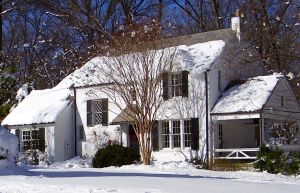Weatherizing U.S. homes to tighter international standards can save up to $33 billion in energy bills each year, according to calculations by engineers at Lawrence Berkeley National Lab in California, part of the U.S. Department of Energy. The team led by environmental engineer Jennifer Logue published its findings in this month’s issue of the journal Energy and Buildings (paid subscription required).
Logue and colleagues used physics-based modeling techniques to simulate the economic impact of retrofitting homes in the U.S. to tighter specifications issued by standards organizations. The 113 million residences account for 23 percent of source energy consumed in the U.S., say the researchers — about 22 quadrillion British Thermal Units, or quads — which includes energy burned on site, as well as the energy needed to produce and deliver it. And about half of that site energy is used for heating and cooling homes.
The Berkeley Lab team computed the potential savings of several specifications, including international standards, for weatherization that seals cracks that let in air to the home, which needs to be heated or cooled. While builders in the U.S. have been constructing tighter homes in recent years, there is still no consensus on the best ways to minimize leaks.
The researchers calculated that weatherizing homes to the International Energy Conservation Code standard for residences, defined as low-rise buidlings of three stories or less — would provide for the most savings in energy bills and be more achievable as well. The team calculated retrofitting homes to that international standard would reduce air flow in homes by a median value of 50 percent, and result in total annual savings to owners and renters of 3.83 quads, which translates to $33 billion in lower energy costs.
Even less ambitious targets can provide substantial savings in heating and cooling bills. For example, upgrading homes to be as air-tight as the top 10 percent of similar homes, say the researchers, would cut energy demand by 2.6 quads annually, and lower total heating and cooling bills by $22 billion each year.
“It looks like the IECC standard gets us the majority of the benefit of air sealing,” says Logue in Berkeley Lab statement. “More research is needed to determine the costs of implementing each of these standards in new homes to see which are cost-effective.”
Read more:
- Open Source Energy-Economy Optimization Model Developed
- Nanotech Window Coating Controls Building Light, Heat
- Engineers Double Efficiency of Solar Film Cells
- National Lab Develops Solar Photosynthesis Testing Device
- Study: Solar Panel Industry Now a Net Energy Producer
* * *


 RSS - Posts
RSS - Posts
You must be logged in to post a comment.